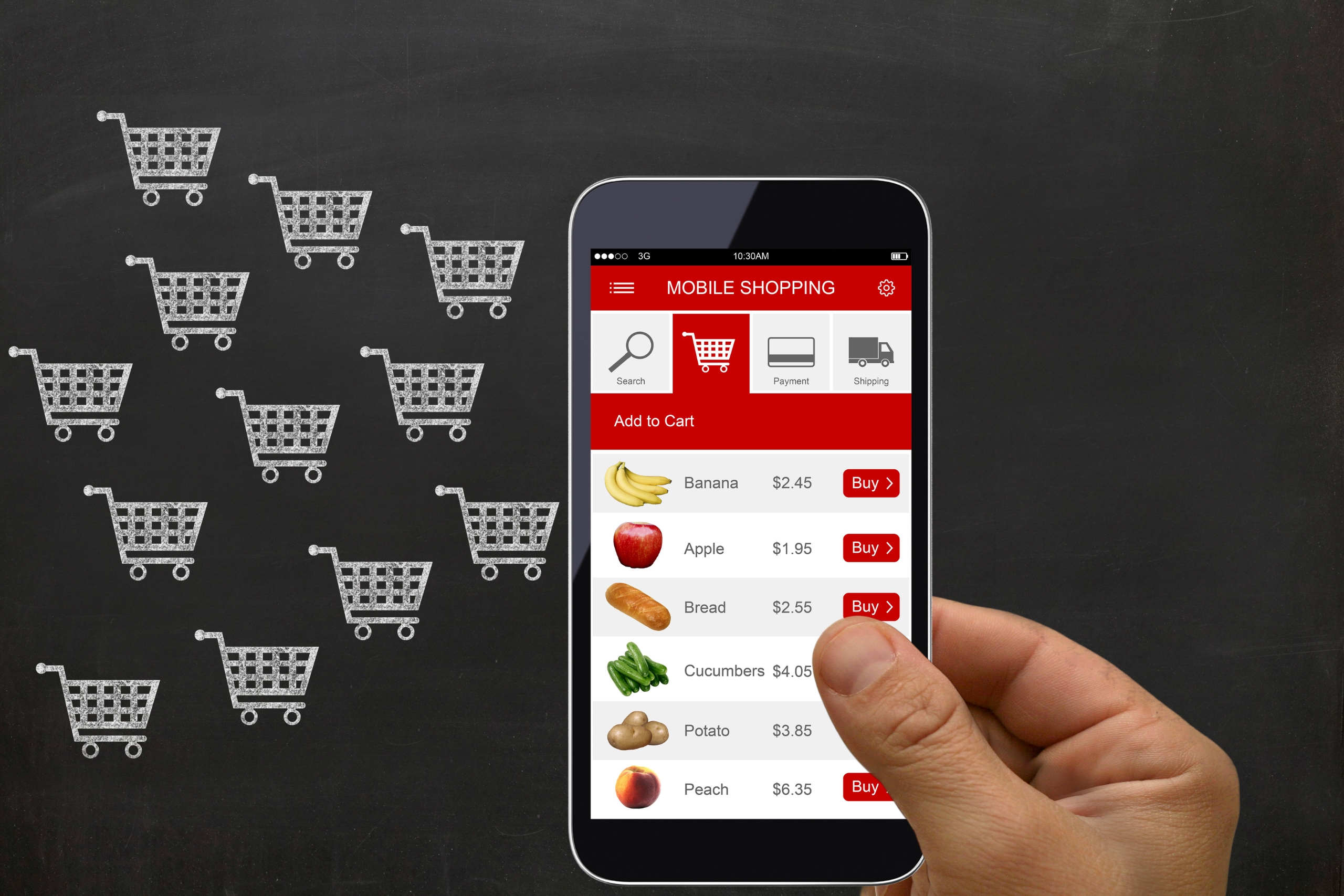In today’s digital age, having a strong online presence is crucial for the success of any Shopify store. This is where mobile optimization and SEO come into play. With the majority of internet users accessing websites through their mobile devices, it is important for Shopify stores to ensure that their websites are fully optimized for mobile. This includes fast loading times, easy navigation, and a responsive design that adapts to various screen sizes.
Additionally, SEO plays a vital role in driving organic traffic to a Shopify store. By optimizing the website with relevant keywords, high-quality content, and meta tags, store owners can increase their visibility on search engine results pages. This, in turn, leads to higher organic traffic and improved rankings, ultimately resulting in more potential customers and sales.
Importance of Mobile Optimization
Mobile optimization is an essential aspect of any website or online platform in today’s digital landscape. With the majority of internet users now accessing content through their mobile devices, it is crucial for businesses to ensure their websites are fully optimized for mobile. This not only enhances the user experience but also plays a significant role in search engine rankings.
Statistics on Increasing Mobile Usage for Online Shopping
The statistics on increasing mobile usage for online shopping are quite impressive. Currently, retail mobile commerce sales make up a significant portion of overall retail sales, with a reported $314.7 billion in sales in 2020. This number is expected to grow substantially by 2025, with an estimated increase to $488.0 billion in sales. This demonstrates the growing trend of consumers using their mobile devices for shopping purposes.
Furthermore, the percentage of new Shopify store sign-ups on mobile devices is quite substantial, with 81% of new store owners signing up via mobile in 2020. This highlights the importance of mobile optimization for online retailers, as it is clear that a majority of consumers are utilizing their mobile devices for their shopping needs.
Benefits of Mobile Optimization for Shopify Stores
Mobile optimization for Shopify stores offers a range of benefits to both businesses and customers. By improving user experience and navigation, businesses can ensure that visitors can easily find what they are looking for, leading to increased conversions and sales. This is particularly important as more and more people are shopping on their mobile devices.
Enhancing mobile-specific features and functionality can further improve the overall experience, providing customers with a seamless and intuitive shopping experience on their phones or tablets. This can include features such as mobile-friendly design, fast load times, and easy checkout processes, all of which can contribute to higher sales and customer satisfaction.
For businesses, mobile optimization can also lead to improved search engine rankings, as search engines like Google prioritize mobile-friendly websites in their mobile search results. This can help drive more organic traffic to the store and ultimately increase sales.
Overall, investing in mobile optimization for Shopify stores can result in a higher ROI, better user engagement, and a competitive edge in the e-commerce market. It’s a crucial step for businesses looking to stay ahead in the digital age and cater to the growing number of mobile shoppers.
Mobile SEO Strategies for Shopify Stores
When it comes to mobile SEO strategies for Shopify stores, keyword research and optimization are crucial for reaching the growing number of mobile users. Start by identifying relevant keywords that are frequently used in mobile searches related to your products or services. Consider using long-tail keywords that are more specific and have lower competition, as these can help you target a more niche audience.
Once you have your keywords, integrate them strategically into your Shopify store’s mobile content, including product descriptions, meta titles, and image alt tags. Keep in mind that mobile searchers often use voice search and more conversational queries, so optimize your keywords accordingly.
Furthermore, focus on improving the mobile user experience, as this is a key ranking factor for mobile searches. Ensure that your Shopify store is mobile-friendly, with fast loading times and easy navigation. Optimizing for local search is also important for mobile SEO, so make sure your store is listed accurately on Google My Business and other local directories.
Technical Optimization for Mobile-friendly Browsing
In today’s digital age, it’s crucial for websites to offer a seamless and enjoyable user experience, especially on mobile devices. To achieve this, implementing technical optimizations for mobile-friendly browsing is essential.
First and foremost, responsive design and mobile-friendly themes are key. This means ensuring that the website layout and content automatically adjust to fit any screen size, providing a consistent and user-friendly experience across all devices.
Page speed optimization is another critical aspect of mobile-friendly browsing. Slow-loading pages can be frustrating for mobile users and may lead to high bounce rates. Therefore, optimizing website speed through various techniques such as image compression, minification of codes, and leveraging browser caching is essential.
Additionally, mobile-specific meta tags and structured data play a vital role in improving visibility and relevance in mobile search results. By including mobile-specific meta tags and structured data, websites can provide search engines with the necessary information to better understand and display the content on mobile devices.
Content Optimization for Mobile
In today’s mobile-first world, it’s crucial for businesses to ensure that their product descriptions, images, and media are all optimized for mobile viewing. This means crafting concise and engaging product descriptions that are easily scannable on a smaller screen, and ensuring that images and media are compressed and formatted for quick loading without sacrificing quality.
In addition to content optimization, businesses should also be utilizing mobile-responsive landing pages and call-to-action buttons to ensure a seamless user experience. This means that users can easily navigate through the website and complete desired actions, such as making a purchase or signing up for a newsletter, without encountering any barriers due to poor mobile optimization.
By focusing on these key elements of content optimization for mobile, businesses can effectively engage and convert their mobile audience, leading to increased sales and customer satisfaction. It’s essential to keep in mind the unique needs and behaviors of mobile users, and to tailor the content and user experience accordingly. By prioritizing mobile-friendly content, businesses can stay competitive and responsive to the needs of their audience.
Mobile App Integration with Shopify Stores
Mobile app integration with Shopify stores offers numerous benefits for both merchants and customers. For merchants, a mobile app provides a direct channel to engage with their customers, increase brand visibility, and drive sales. With a mobile app, merchants can send push notifications to promote new products, offer exclusive discounts, and provide personalized recommendations. Additionally, a mobile app allows merchants to create a seamless and convenient shopping experience for their customers, leading to higher customer satisfaction and loyalty.
For customers, a mobile app provides a more convenient and user-friendly way to shop. With a mobile app, customers can easily browse products, make purchases, and track their orders on the go. A mobile app can also offer a more personalized shopping experience by allowing customers to save their preferences, receive relevant recommendations, and access loyalty programs.
Furthermore, mobile app integration with Shopify stores can help merchants take advantage of mobile-specific features such as in-app payments, location-based services, and offline access. Overall, mobile apps can significantly enhance the overall shopping experience for both merchants and customers, making it a valuable investment for Shopify stores.
Strategies for Integrating Mobile Apps with Shopify
To effectively integrate mobile apps with Shopify, it is important to focus on push notifications and personalized messaging to engage users. By sending targeted messages and notifications, businesses can keep customers informed about special promotions, new products, and personalized recommendations. This not only helps in increasing customer involvement but also drives sales.
Additionally, a seamless mobile checkout process is crucial for a positive customer experience. By streamlining the checkout process within the mobile app, businesses can reduce cart abandonment and improve overall conversion rates. Implementing features such as saved payment information and one-click purchasing can help streamline the checkout process.
Furthermore, by leveraging Shopify’s mobile app development tools, businesses can create a seamless and integrated experience for their customers. This may include integrating loyalty programs, personalized product recommendations, and easy access to customer support within the app.
Social Media and Mobile Marketing
In today’s digital age, leveraging social media platforms for mobile engagement has become vital for successful marketing strategies. With the increasing number of mobile users accessing social media through their smartphones and tablets, it is essential for businesses to optimize their advertising and targeting strategies for mobile devices.
Social media platforms such as Facebook, Instagram, Twitter, and LinkedIn offer various tools and features to specifically target mobile users. These platforms allow advertisers to create mobile-specific ads, use mobile-friendly formats such as video and carousel ads, and even utilize location-based targeting to reach users on the go.
Mobile advertising on social media also allows for precise targeting based on demographics, interests, behaviors, and even user interactions with mobile apps and websites. By understanding the mobile behavior and preferences of their target audience, businesses can create more personalized and relevant content that resonates with mobile users.
In addition to targeted advertising, businesses can also leverage social media for mobile engagement through interactive content, mobile-optimized landing pages, and chatbots for real-time customer interaction. Ultimately, integrating social media and mobile marketing strategies can help businesses reach and engage with their audience on the go, driving better results and ROI.
Measurement and Analytics for Mobile SEO
In the digital age, mobile SEO is essential for businesses to optimize their online presence and reach a wider audience. Measurement and analytics play a crucial role in understanding the effectiveness of mobile SEO strategies and making data-driven decisions to improve performance and visibility.
Tracking Mobile Organic Traffic and Keyword Rankings
To track mobile organic traffic and keyword rankings, start by setting up Google Analytics to monitor website traffic. Within Google Analytics, navigate to the “Acquisition” tab and select “Mobile” to see mobile organic traffic data. This will provide valuable insights into the amount of organic traffic coming from mobile devices.
For keyword rankings, use keyword ranking trackers like SEMrush or Ahrefs to monitor organic keyword positions for mobile search. These tools provide detailed reports on keyword ranking performance, allowing you to track the effectiveness of your mobile SEO efforts.
Monitoring mobile search engine optimization is crucial as more users are conducting searches on mobile devices. A mobile-friendly website is essential for ranking well in mobile search results. Google prioritizes mobile-friendly websites in its mobile search results, so having a responsive and user-friendly mobile site can significantly impact organic traffic and keyword rankings.
By tracking mobile organic traffic and keyword rankings, businesses can optimize their mobile SEO strategy and ensure their website is well-positioned in mobile search results. This is essential for reaching and engaging with the growing number of mobile users and maximizing organic traffic from mobile devices.
Analyzing Mobile User Behavior and Engagement Metrics
When analyzing mobile user behavior and engagement metrics, it is important to pay attention to various key indicators such as conversion rates, bounce rates, and time spent on site. Conversion rates refer to the percentage of users who take a desired action, such as making a purchase or signing up for a newsletter, on the mobile site. A high conversion rate indicates that the site is effectively persuading users to take action.
Bounce rate, on the other hand, measures the percentage of visitors who navigate away from the site after viewing only one page. A high bounce rate may indicate that the site is not effectively engaging visitors or providing relevant content.
Time spent on site is another crucial metric, as it indicates how long users are engaging with the site. The longer the time spent on site, the more engaged and interested the users are in the content and offerings.
By analyzing these metrics, businesses can gain valuable insights into how users are interacting with their mobile site, identify any potential pain points, and make data-driven decisions to optimize the user experience. This can ultimately lead to improved engagement, increased conversions, and a more successful mobile presence.

Conclusion
In conclusion, mobile optimization and SEO are crucial for the success of Shopify stores. With the increasing number of users accessing websites through mobile devices, it is essential for Shopify store owners to ensure that their sites are mobile-friendly and optimized for search engines. By implementing a strong Shopify SEO strategy and focusing on mobile optimization, store owners can improve their visibility, attract more traffic, and ultimately increase their sales and conversions. To achieve mobile success on Shopify, it is important to regularly monitor and optimize the site for mobile performance, utilize responsive design, and prioritize mobile-friendly content and images.
Additionally, implementing structured data markup and improving page speed can further enhance the mobile user experience. By prioritizing mobile optimization and SEO, Shopify store owners can ensure that their site is competitive and reaches a wider audience, ultimately leading to better business results. Shopify SEO should be a top priority for anyone looking to improve their online presence and drive more traffic to their store.




